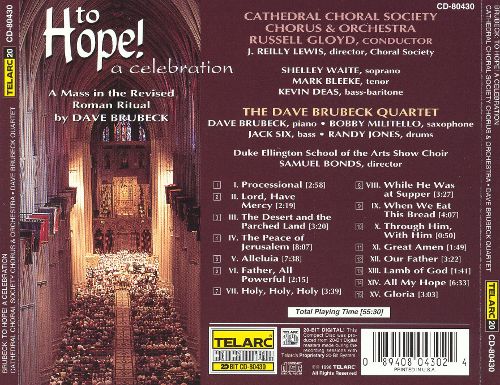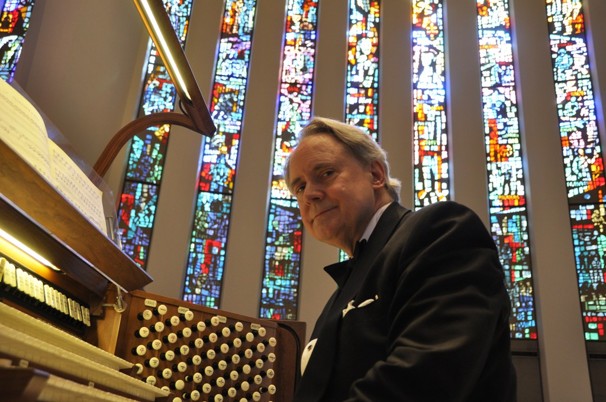
As I mentioned in Tuesday’s post and have previously alluded, there’s a musical story that I haven’t told about my life. It’s tied up with Reilly Lewis and the Cathedral Choral Society, and marks my first brush with a celebrity musician (at least, outside the classical world; the first was with the great Robert Shaw, with whom I sang Hindemith’s When Lilacs Last in the Door-Yard Bloom’d the previous season).
We were performing Brubeck’s To Hope! A Celebration, a most unusual work that combined jazz with traditional mass structure—if not traditional mass texts. It’s still the only work of which I’m aware that incorporates both a fugue and a gospel stride piano number. The music didn’t make a lot of sense with just rehearsal piano, but everything was about to change.
It was spring at the National Cathedral, which meant rehearsal space conflicts. So we were across the street in the gymnasium of the National Cathedral School running through the music again. At one point, while Reilly Lewis was addressing the chorus, the door opened in the corner and I saw out of the corner of my eye two men enter: Russell Gloyd, who would conduct the chorus and orchestra, and a tall, white-haired man with a wide grin: Dave Brubeck.
After everyone applauded, Reilly said, “You know, I’ve always wanted to do this,” and sprinted to the piano where he played the first three bars of “Blue Rondo à la Turk.” Everybody cracked up, and Brubeck said, “Keep going!” That moment set the tone for the collaboration.
When it came to the day of the performance, it was odd to see large numbers of microphones and a large sound console halfway down the nave. It was then that the magnitude of what we were doing hit me: this was the recording team from Telarc, Brubeck’s label, who were going to record us. We got through the performance, about which I remember very little except for Brubeck’s introduction of his band—Bobby Millitello on sax, Rodney Richards on drums, and Jack Six (“S-I-X!”) on bass—and then got out of our performance clothes and got comfortable.
We had been told that we would record “patches” to cover over places where outside noise or glitches in the performance marred the live take. “Patches” ended up taking hours. At one point we needed to do a couple takes of one particularly tricky moment for the chorus that had been garbled in the performance, and the band (except for Brubeck) took a break. We nailed the take, and then the producer called for the band again. Apparently they had stepped outside for a cigarette; someone had to be sent to fetch them through the outside door located in the far end of the nave from our recording location in the transept.
When they came back in, doing the long march up a side aisle along the nave, Brubeck dryly broke into “When The Saints Go Marching In.” And the chorus sang along. It’s the only time that I ever improvised with a jazz legend.
The live recording was issued as To Hope! A Celebration by Telarc and remains the only jazz album on which I’ve performed.

